Chocolate Gumby
El Choco/Gumby cross
Dave Wombat
8/19/2024

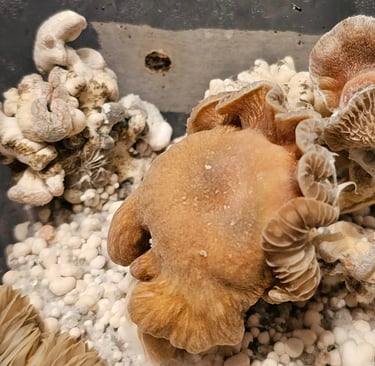
Crossing genetics is not a simple additive process...we often hope that "trait A" plus "trait B" will result in offspring with "trait AB", and sometimes we do get lucky with kids that resemble both parents...but mushrooms are complex, and their phenotypic expression variable based on both genetics and environment. Often the combination of spores from two distinctly isolations can result in a very normal, outdoor type expression. Other times, playing the genetic library results in hitting a jackpot, and Chocolate Gumby is a good example of the latter.
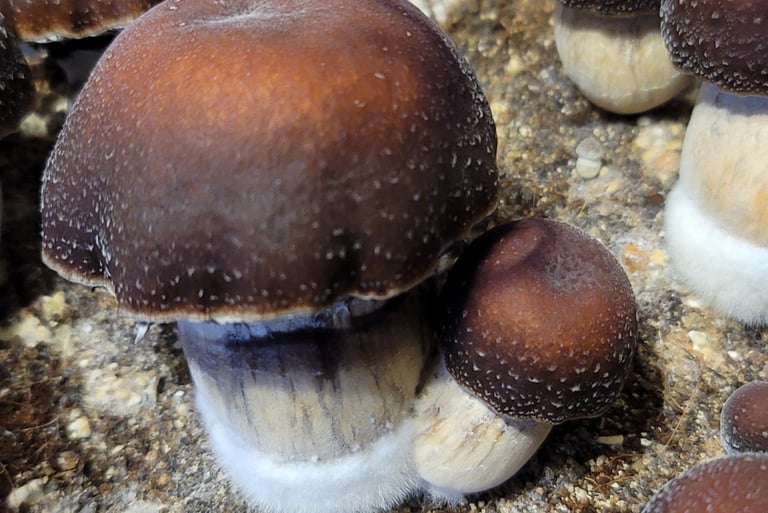

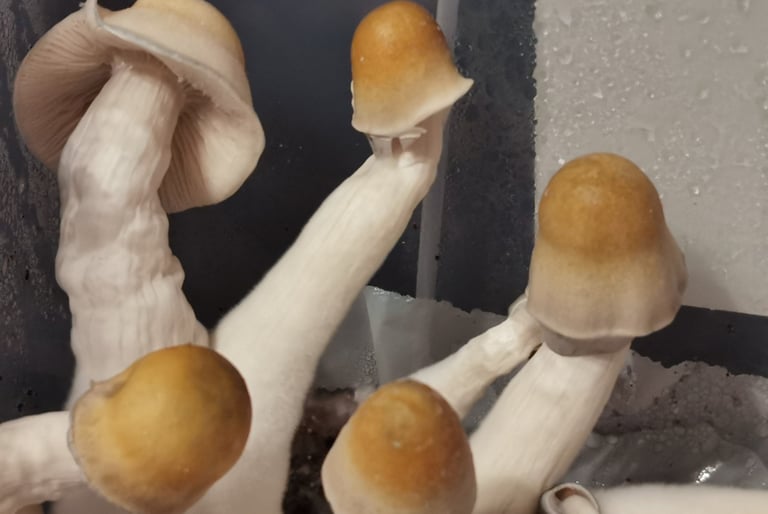

The Chocolate Gumby cross was performed by di-mon pairing, a single-spore germination (monokaryon) from El Choco (above, left) plated on agar with a mated two-spore germination (dikaryon) of Gumby (above right). When the monokaryotic and dikaryotic hyphae meet, another mating event occurs, with the dikaryon contributing one of its two nuclei to pair with the monokaryon, and this new dikaryotic growth is then transferred and propagated for fruiting.
El Choco is a dark chocolate extra pigmented mutation of B+, while Gumby is a long stemmed, narrow helmet capped offshoot from unstable Melmak TP. My general expectation for the cross was perhaps a long stemmed, chocolate capped mushroom. What I got, with the first attempt at growing it, was a tub that grew a small Enigma-looking fin mutation and then fell to contamination. A clone was taken from the mutant before it was overtaken by the green monster and cleaned up on agar for another run.
The next grow seemed to be following the same path towards a brain coral type growth, and in my excitement, I sent out a number of the cultures to people labeled "Chocolate Gumby Brains". Then to my surprise, the brain like growths began to grow cap parts with gills and spores, and a few very slow growing mushrooms began to grow as well.
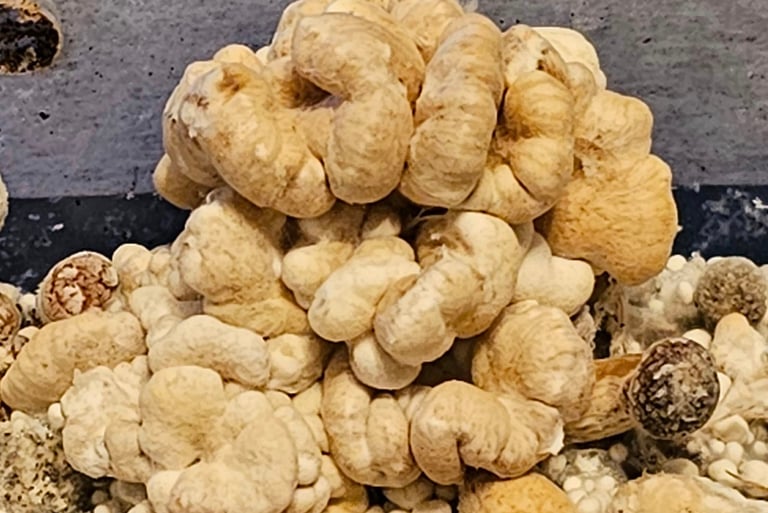

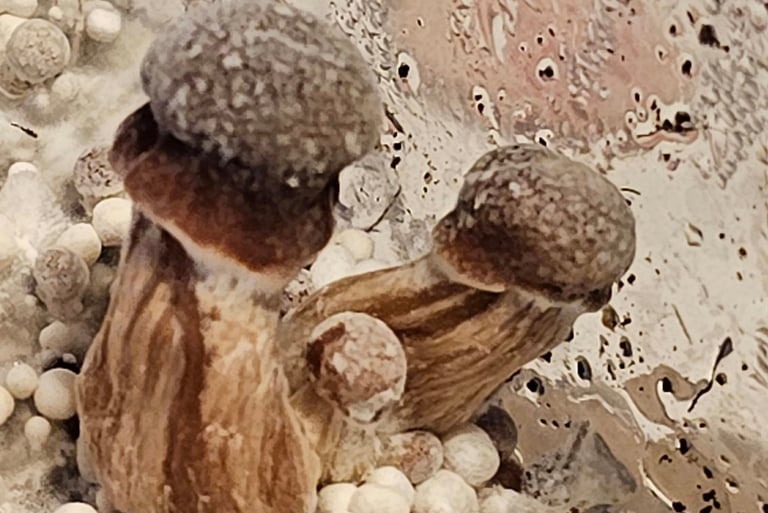

The chocolate pigmentation from El Choco was immediately obvious, both in the caps and in some extreme veining in on the stems. The early pins had a bit of a Gumby gumdrop/bucket helmet shape to them, but eventually develop into larger, widespread caps full of the most unusual gill structure I've ever encountered. The gills are thick, and branching rather than simply radially symmetrical, but they also have smaller gills on the sides of the larger gills. Further investigation revealed even smaller gills on the smaller gills, all the way down to the microscopic level...a real living fractal in action. The rest of the fruits morphology is no less bizarre, ranging from lumpy brain clusters with long, ribbon like caps along their crests, to inside out gill monstrosities. The fruit material is dense like wood, and the fruits take an incredibly long time to fully develop.

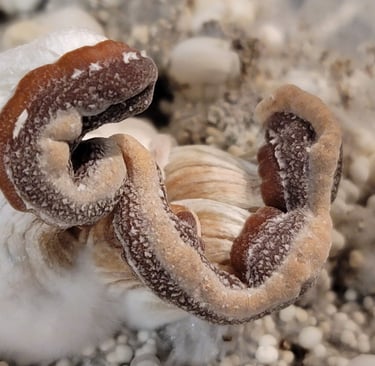
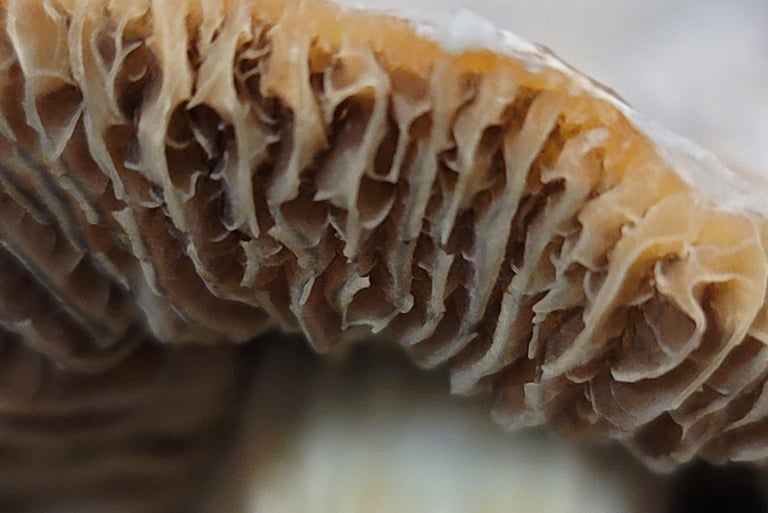

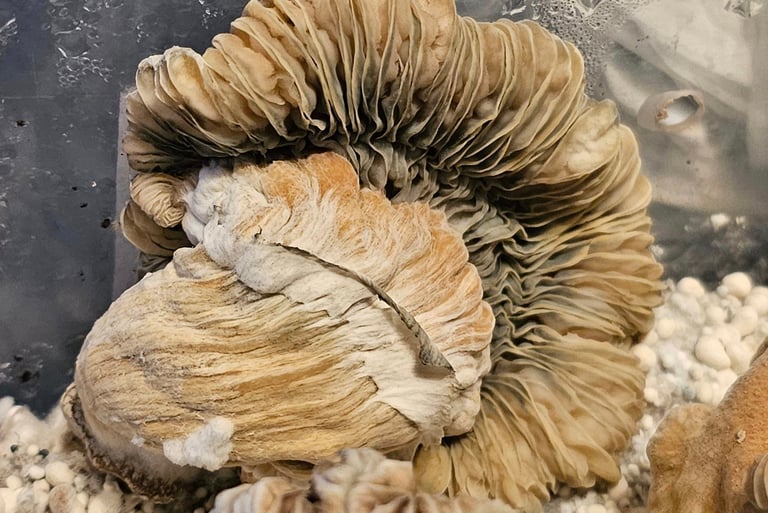

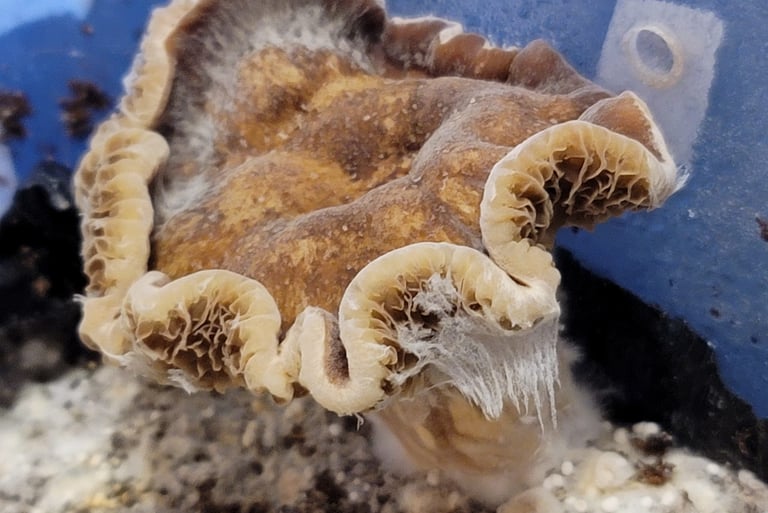

Its slow growth doesn't seem to favor the "full canopy" type flush, but rather produces large individual fruits spaced apart in the tub. Development time from pin to picking can take as long as a month in some cases. There is no spore ejection, and in some cases the spores are only situated on the outer edges of the gills in single-row lines so the gill color may or may not darken visibly as the spores mature. The density of the fruit material also defies the usual "squeeze for softness" test. So..."when do you pick them?" is a tough question to answer...basically you pick them when you just can't wait anymore. If you can see color change from mature spores, that's usually a good sign most varieties are done, but Chocolate Gumby can continue to grow quite a bit past this point, and its spores also develop over a long time. Its an absolute marvel to watch growing, and its wacky looking fruits are absolutely packed with active alkaloids.
The name was an obvious combination of the parents names, and I did expect to maybe get chocolate colored Gumby style fruits...but Chocolate Gumby is most definitely its own individual character...not your typical cube.
